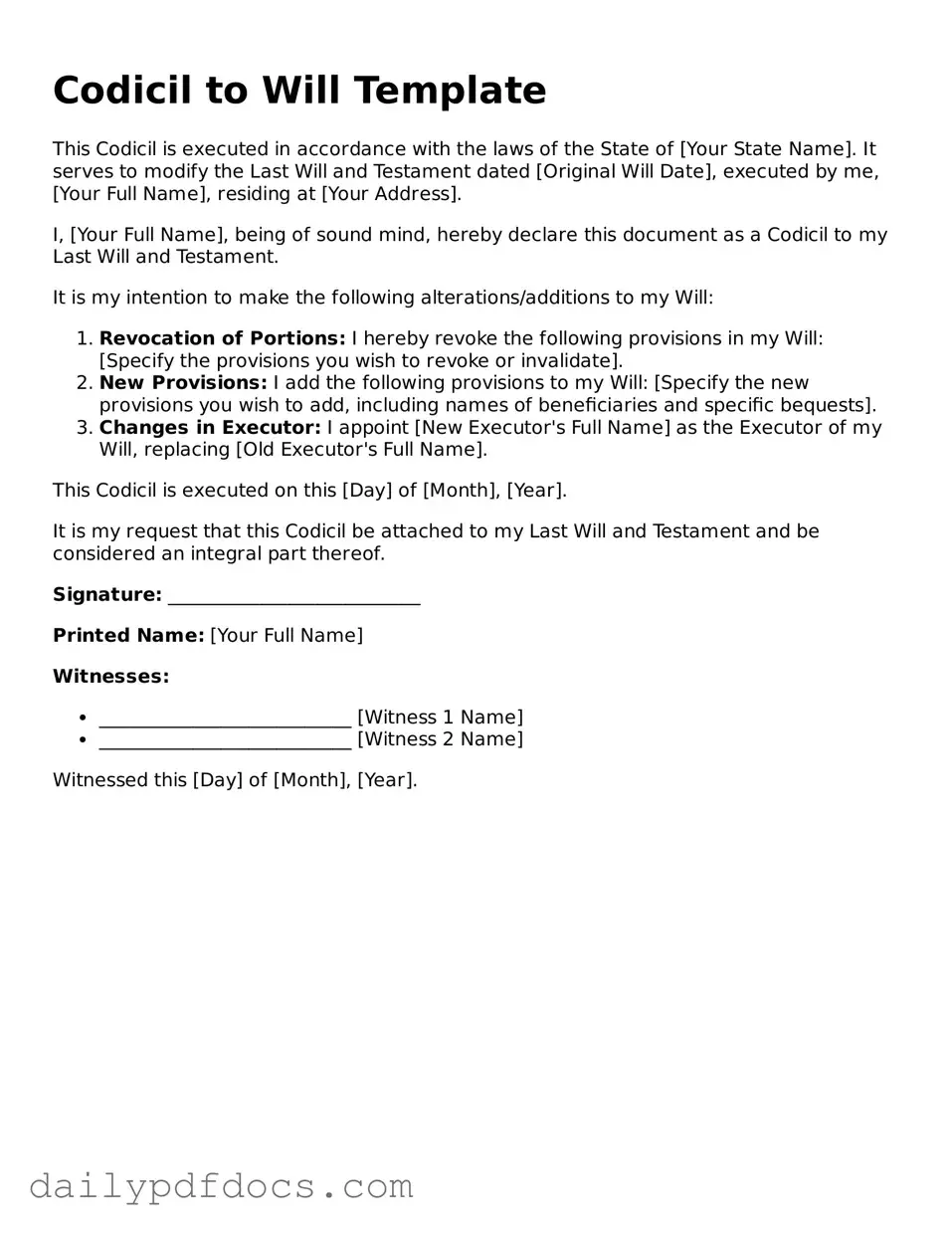What is a Codicil to a Will?
A codicil is a legal document that allows you to make changes or updates to your existing will without creating an entirely new document. It can be used to add new provisions, modify existing ones, or revoke certain clauses. This is particularly useful if you want to make small adjustments rather than drafting a new will from scratch.
When should I use a Codicil?
You should consider using a codicil when you need to make minor changes to your will. Common reasons include changing an executor, adding or removing beneficiaries, or updating specific bequests. If the changes are substantial, it may be better to create a new will altogether.
How do I create a Codicil?
To create a codicil, you must follow the same legal requirements as your original will. This typically includes writing the codicil, signing it, and having it witnessed, depending on your state’s laws. Make sure the codicil clearly states that it is intended to amend your existing will.
Do I need to notify my beneficiaries about the Codicil?
While it is not legally required to notify your beneficiaries about the codicil, it is a good practice to do so. Keeping them informed can help avoid confusion or disputes later on. Clear communication can also ensure that your wishes are understood and respected.
Can I revoke a Codicil?
Yes, you can revoke a codicil at any time. This can be done by creating a new codicil that explicitly states the revocation or by physically destroying the codicil. If you create a new will, it generally revokes any previous wills and codicils, unless stated otherwise.
Is a Codicil legally binding?
Yes, a properly executed codicil is legally binding, just like a will. It must meet the same legal standards as your original will to be valid. This includes being signed and witnessed according to your state’s laws. Ensure that all requirements are met to avoid any challenges to its validity.
Can I use a Codicil if my original Will is in another state?
Yes, you can use a codicil even if your original will was created in another state. However, it is essential to follow the laws of the state where you currently reside. Different states may have varying requirements for wills and codicils, so be sure to check local laws to ensure compliance.
